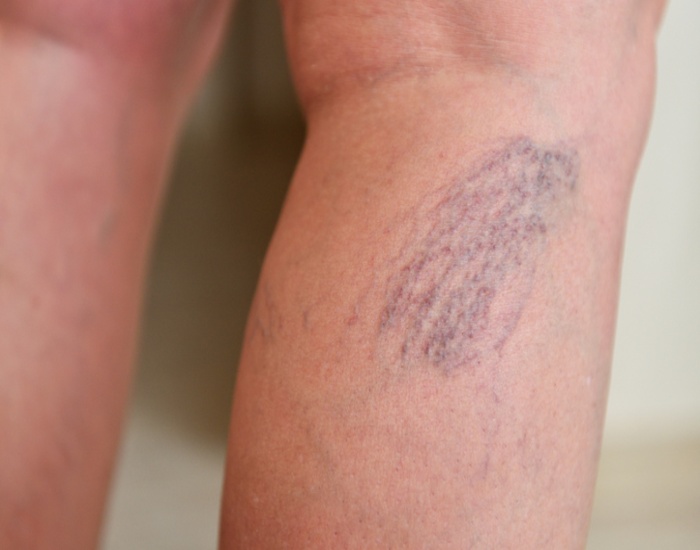Clearing Up the Misconception: Why Are Veins Blue?
We have all seen the bumpy blue veins that pop up on our hands and arms and wondered why they appeared that color. It is a common misconception that veins are inherently blue, while the blood that flows through them is red. However, the answer is much more complex, and there is a scientific reason for why veins appear blue. As a leading provider of vein solutions in Houston, TX, Premier Vein & Vascular Center understands the importance of educating patients about their vein health. In this blog post, we will explore the truth behind the question – Why are veins blue?

Why Are My Veins So Blue?
It is essential to address the fallacy that veins are blue, while blood is red. In reality, blood is red, and veins are not inherently blue. The misconception primarily stems from how light interacts with the skin, giving the illusion that veins are blue. This interaction occurs because of the way human skin absorbs and reflects different wavelengths of light, including red, blue, and green. Due to the composition of skin, blue light penetrates it more efficiently than the rest of the visible light spectrum, and when blue light reaches a vein, it is absorbed, which makes it appear blue to the naked eye.
Green Veins vs. Blue Veins
While most veins do appear blue, there are some exceptions. The appearance of veins can vary in color, with some individuals possessing green veins rather than the blue color typically seen. However, this does not negate the fact that veins are not inherently blue. The reason for the green color is once again attributed to how light interacts with the skin and underlying tissues. When the skin and tissues absorb blue light, yellow light is reflected, causing the appearance of green veins.
Several factors can influence the perception of vein color, such as skin tone, thickness, and a person’s age. In individuals with a darker skin tone, the blue hue of veins may not be as noticeable, while in individuals with lighter skin, the veins’ blue color is more apparent. Additionally, as people grow older, their skin thickness decreases, which can also make the blue color less visible.
Understanding the Anatomy of Veins
Our veins act as passageways for blood flow that travels throughout our body. The human body consists of different types of veins, including deep veins, superficial veins, and perforator veins. It is vital to understand the anatomy of veins and how they function to maintain good venous health.
Veins have a layered structure. The innermost layer is called the endothelium, which is a thin layer of cells that form a smooth surface for blood flow. The middle layer is made of smooth muscle, which helps regulate the diameter of veins and allows them to contract when needed. The outermost layer is made up of connective tissue, which provides support to the vein and gives it its shape, flexibility, and strength. Together, these layers ensure that blood is transported efficiently back to the heart.
Maintaining Healthy Veins is Essential
Blood clots in veins can cause swelling, discomfort, and even lead to serious complications such as Deep Vein Thrombosis (DVT). Venous insufficiency, a condition where the veins are unable to efficiently return blood to the heart, can also cause varicose veins. Varicose veins are large, twisted, and painful veins that appear blue or purple and appear on the legs. If left untreated, they can cause complications such as bleeding, skin ulcers, and infections. If you are experiencing any vein-related issues, seek medical advice and professional treatment.
Be Proactive with Vein Health
Keeping veins healthy involves undertaking various measures, such as regular exercising, eating a balanced diet, and avoiding prolonged sitting or standing. Compression stockings or sleeves can also help improve blood circulation. If you notice any changes in your veins, such as swelling or discoloration, it is crucial to seek medical attention to identify any underlying issues and address them appropriately.
Schedule a Professional Vein Care Consultation in Houston, TX Today!
If you’ve been experiencing pain, swelling, or discomfort in your legs, it’s possible that you may have a vein issue that requires professional care. Premier Vein & Vascular Center is here to help. Our team of experienced specialists provides expert care and consultation for a variety of vein conditions, including varicose veins, spider veins, and more. With our advanced diagnostic and treatment options, we can help you get back to feeling your best in no time. And if you’ve ever wondered why veins appear blue, our team can explain that as well. Don’t let vein issues disrupt your life any longer! Contact Premier Vein & Vascular Center today to schedule an appointment. You can visit our website or call our office at (832) 321-5355 for more information.
